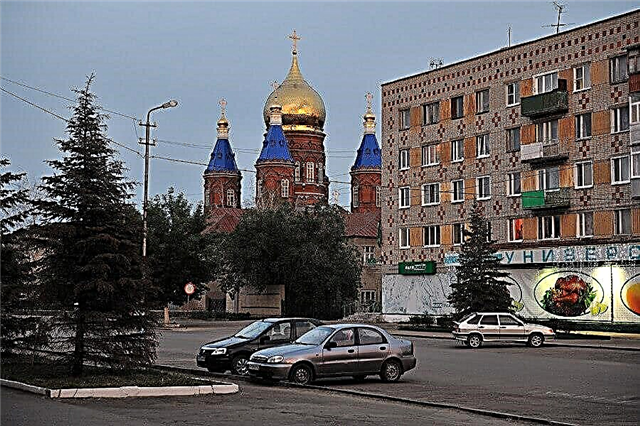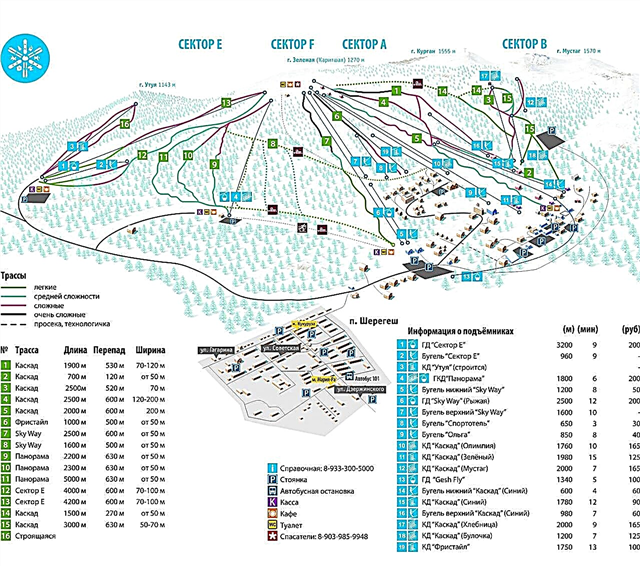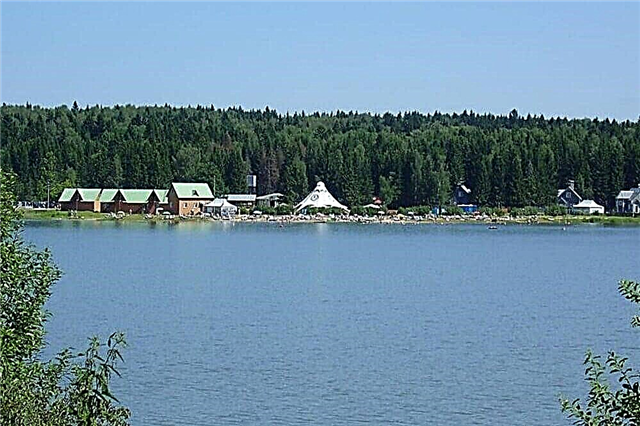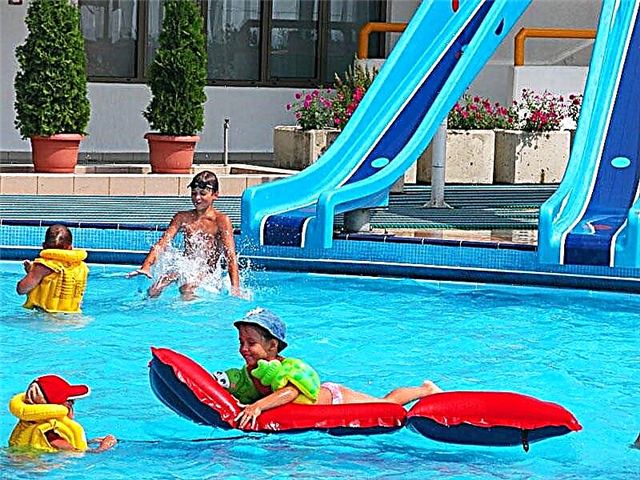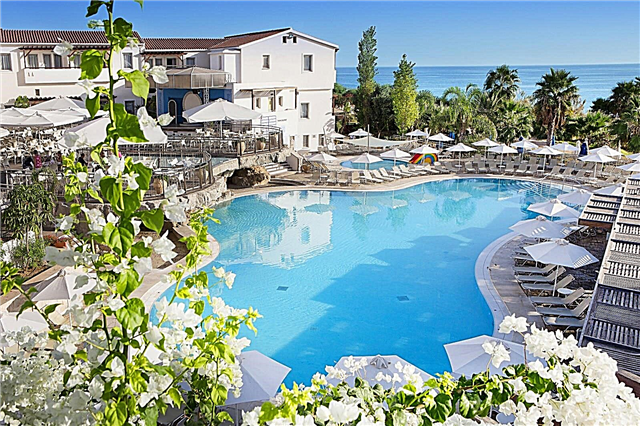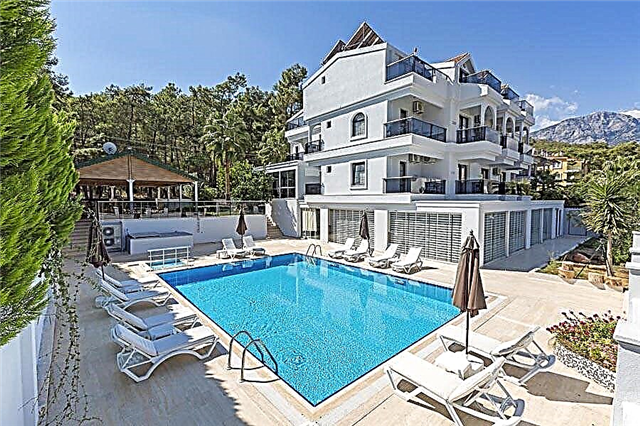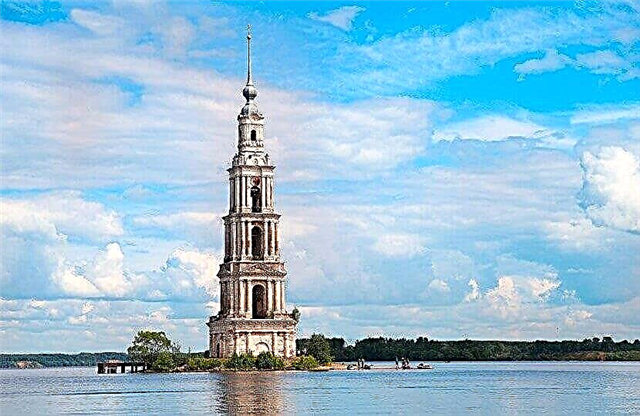Tver region is a concentration of interesting places of different directions. Historical monuments located here are associated with important events in the history of the state. There are also many new buildings and improved areas of Tver, which from the moment of their appearance immediately became the object of close attention of local residents and guests of the city. An important part of the cultural life of the region is occupied by museums and religious sites.
The latter attract not only believers and pilgrims, but also those who want to learn more about the past of the area. Natural beauties, all kinds of monuments and open-air complexes are an excuse to get out of the four walls and make an unforgettable walk. The main thing is to find time for a detailed acquaintance with all this splendor.
The most interesting and beautiful places in the region
List, photos with names and descriptions of the best attractions of the Tver region!
Lake Seliger
A lake located in the Tver and Novgorod regions. The total area is 260 km². The largest island is Khachin. There are about 160 of them in total. There are more than a hundred tributaries, and only Selizharovka flows out. The coastline is actively used. In the south there is the city of Ostashkov. A nearby attraction is the Novye Yeltsy estate. In recent years, a gathering of initiative youth has been regularly held on the lake.

See also: 45 main attractions of Tver. Planning a vacation, then we recommend: 35 best recreation centers in the Tver region.
Nilova hermitage
Monastery for men. It is located on Stolbovoy Island and on the Svetlitsa Peninsula. First mentioned in 1528. The monastery appeared thanks to the hermit monks who settled in its present territory. In Soviet times, the purpose of buildings changed many times. After the return of the ROC, most of the buildings were restored. There is a hotel for pilgrims, the production of honey, candles, milk and other things. Participates in fairs.

Borisoglebsky Monastery in Torzhok
Male. Founded in 1038. The flourishing of the monastery is associated with the time of the reign of Ivan the Terrible: up to this point, historical records are considered lost. Shortly before the return of the Russian Orthodox Church, the monastery partially became a museum, and many buildings were restored to their proper form. Since 1993, divine services have begun here. Particularly noteworthy is the gate church, which has its own bell.

Staritsky Assumption Monastery
Male. Located in the city of the same name on the banks of the Volga. Founded in the 16th century. Every hundred years, the position of the monastery changed: from prosperity to decline and the selection of land. In 2013, restoration work was completed, and the monastery was restored to its original form. On the territory there are a temple, three churches, a chapel with a font, a mausoleum, a rector's building and small outbuildings.

Kalyazin bell tower
It also has another name - the submerged bell tower. Located on the island of the Uglich reservoir. Built in 1800. When in the 40s of the last century the area around was deliberately flooded, expanding the Volga, the bell tower was left as a lighthouse. Almost forty years later, the foundation was strengthened, a small pier was created. In 2016, new bells were installed. The Upper Volga religious procession ends here.
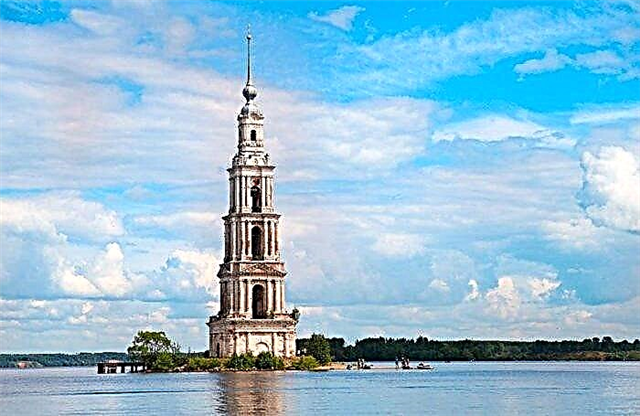
The source of the Volga
Located in the Ostashkovsky district. There is a small swamp and several springs, which are the starting point for the Volga. The water does not appear clear and even when viewed up close has a brownish tint. A chapel and a bridge over the reservoir were built nearby. Traces of the old dam are visible nearby - stone boulders destroyed by time. A nature reserve is organized around.

Tver Imperial Traveling Palace
Built in the 18th century. The architectural style is classicism with baroque elements. The original destination was a resting place for the imperial family during their travels between Moscow and St. Petersburg. It was regularly updated, decorative elements and add-ons were added. Now given over to an art gallery. By 2017, restoration work has been completed and the garden has been restored. Open for visits by groups of tourists.

Museum and Factory "Torzhok Gold Embroiderers"
Located in the city of the same name. Refers to a unique local craft - gold embroidery. In the 18th-19th centuries, it was here that the outfits of noble ladies were decorated, expensive shoes were made, ornaments were applied to furniture, and so on. The current museum occupies three halls. Most of the exhibits date back to the past century. Appropriate and atmosphere. One of the directions of factory activity now is shoulder straps for the military.
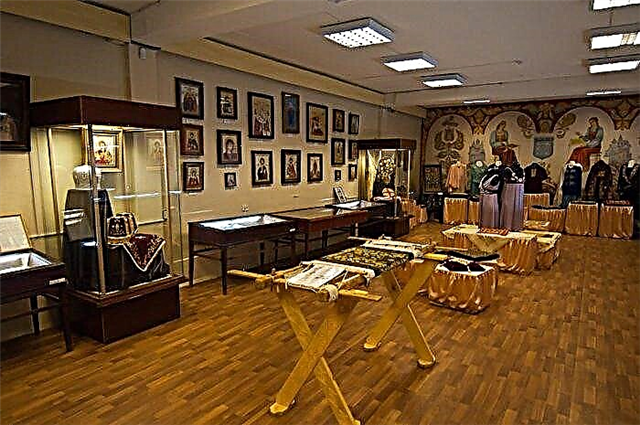
Lake Brosno
It is located in the Andreapol district. The area is more than 7 km². The deepest is 42 meters, the average is about 17 meters. It has an elongated shape. There are villages on the banks. A legend about the appearance of a dragon is associated with the lake. It has a completely explainable phenomenon. At the very bottom, decay processes take place, because of them hydrogen sulfide bubbles appear on the surface, which so frightened our ancestors.

Vasilevo estate
Construction began in the 18th century, but later changes were made to the overall architectural ensemble. Initially it belonged to the noble family of Lvov. Now it is a zone of the museum complex. The boulder arch bridge is one of the most notable objects on the territory. There is also a wooden church of the Ascension, built in 1732, a linden alley, barns, a chapel and much more.

White Trinity Church
Located in Tver. Built in 1564. Unlike most Orthodox churches, it was not closed during the Soviet period. For more than a quarter of a century, it remained the only place where services were conducted in the region. It looks like a white-stone massive multi-domed building with an attached chapel. The cathedral has four thrones. Shrines - the relics of Makarii Kalyazinsky.

Bogoroditsky Zhitenny Monastery
Located on Lake Seliger. Founded in 1716. Its construction is associated with the icon of the Most Holy Theotokos. For 150 years, clergymen were buried here. Some of the graves were destroyed, while others have survived to this day and received new gravestones and memorial monuments. Originally a men's monastery, it became a women's monastery in 2002, when it was decided to restore it.

Kazan monastery in Vyshny Volochyok
Female. Built in honor of the icon of the same name. Founded in 1881. After many years of inactivity, it was restored in the early 90s of the last century. Since the buildings were used actively and for other purposes, many had to be restored. The monastery ensemble includes: three churches, two chapels, the main cathedral, outbuildings. Pilgrims are only accepted on Sundays and holidays.

Central Forest Reserve
Located north of Nelidovo. Founded in 1930. Several rivers flow on the territory, there are swamps. The richness of flora and fauna allows for all kinds of research. The soil is also being studied, as well as the influence of various irritants and external factors on its composition. The reserve includes the Okovsky forest, which is considered to be ancient. The territory is mostly guarded.

Museum named after M.E.Saltykov-Shchedrin in Tver
Founded in 1976. It is located in the house where the writer lived for two years, when he held a public office. The number of exhibits is over 800 pieces. All of them, in one way or another, are connected with the biography of Saltykov-Shchedrin. The museum is not only an exhibition and excursions, it is also a venue for literary evenings, thematic temporary exhibitions and conferences.

Stepan Razin Embankment
It is located in Tver on the right bank of the Volga. The length is 1.2 km. The construction was carried out by a group of architects; there are buildings that have survived from the 18th century. The buildings are located close to each other, often even have common walls.Here are both purely architectural monuments, for example, the house of the titular councilor Panov, and municipal buildings, for example, a children's hospital.

Torzhok Embankment
Located on the banks of the Tvertsa River. The territory has gone through several stages of restoration, but retained the atmosphere of the 19th century. Many signs are written with "ъ" to maintain the style. Popular walking area. On a hill stands the Church of the Entry into Jerusalem - one of the main attractions, although Torzhok is rich in old buildings, among which it is difficult to single out the most significant from a historical point of view.

Old Ascension Church in Torzhok
Built in 1653. In its modern form, the structure of the temple is heterogeneous, although it looks like a single composition. This is due to the constant additions and changes in its appearance over the centuries. For the most part, the church is wooden. Services are held in the summer. In other periods, you can get inside, if you agree on an excursion in advance. A notable feature is the painting of the 18th century.
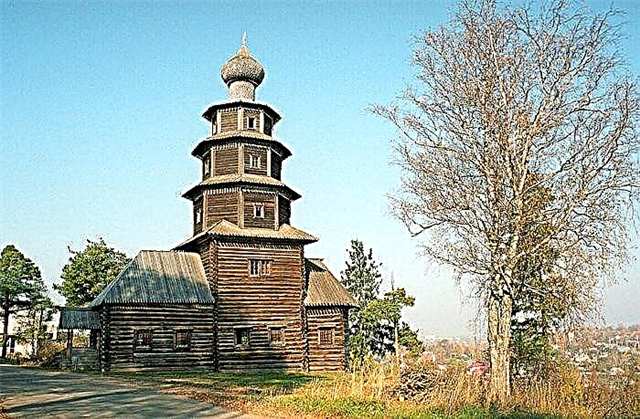
Tver Cathedral Mosque
Built in 1906. The architectural style is New Auritanian. It was closed after less than 30 years. Returned to the Muslim community in the early 90s of the last century. The building itself is small in size with an attached white fence. In 2008, a partial restoration was carried out, it affected the external appearance and strengthening of the foundation. The mosque is similar to a similar building in the city of Potsdam.

Ascension Cathedral in Tver
Built in the middle of the 18th century. Before that, there was a church here. During the Soviet period, the temple experienced a time of closure, plundering and general decay. After returning to the camp, the ROC was restored. Divine services have been held since 1993. It has a yellow-white color of the walls; a three-tiered bell tower is attached directly to the cathedral. The main shrine is the relics of the holy martyr Thaddeus.

Monument to Mikhail Krug
Located in Tver on Radishchev Boulevard. The first stone was laid in 2003, and the finished monument was unveiled four years later. It looks like a small composition: the singer sits on a bench and leans on a guitar, there is a place nearby for those who want to take pictures. Vandals damaged the monument several times, then sawed down a guitar, then painted. But he was always restored to its former appearance.

Memorial complex "Peace Park" in Rzhev
It is divided into several parts, united by one idea: "soldiers' graves are the greatest preachers in the world." The complex includes: a cemetery of Soviet soldiers, a memorial to Kazakh soldiers, Jewish heroes killed during the war, and a German military cemetery. The territory is paved with paving stones, there are paths and small plantings, large flower beds, pedestals and much more in the theme of composition.
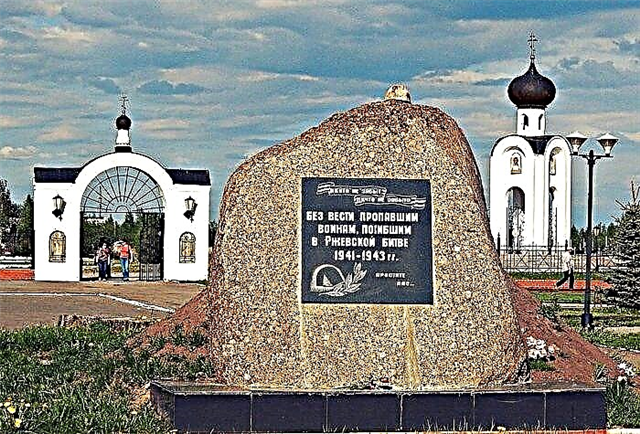
Zavidovo National Park
Founded in 1972. The area is 125 thousand hectares. Includes: forests, meadows, reservoirs. More than 20 thousand people live here and 90 settlements are located. Among other things, the presidential residence "Rus" is located here. Human economic activity is limited a little, but some of its types, for example, cutting down trees, are prohibited. There is a division into types of territories: from specially protected to unguarded.

Pushkin ring of the Upper Volga
A full-fledged tourist route, laid out in the places visited by the writer. Since Pushkin often came to the Tver province and made stops along the way, many objects were included in the excursion program. These are estates, parks, hotels, churches, villages, and so on. In addition, tourists will visit two Pushkin museums. The total length of the Upper Volga ring is 250 km.

Museum of A.S. Pushkin in the Bernovo estate
Founded in 1971. Organized in the estate, which the writer often visited. Previously belonged to the Wulf family - Pushkin's neighbors and friends. In addition to the exposition associated with Alexander Sergeevich, there is also an exhibition of the artist Bubnova. Various literary events are held. Nearby there are landscape parks with memorial plaques and an old cemetery.

Estate Znamenskoye-Rajok
Built in the 18th century. The architectural ensemble is a main house and a circular colonnade. One of the most important buildings of the complex is the Church of the Sign of the Mother of God. From a bird's eye view, it offers a majestic view of the complex. The estate is a historical monument protected by the state, but there are no funds for its restoration yet. Tourists' access is limited, as some of the structures are in disrepair.

Estate Stepanovskoe-Volosovo
Founded at the end of the 18th century. Belonged to the Kurakin family. After nationalization, part of the atmosphere and values were distributed between Tver and Moscow. The building was not adapted for anything, and it gradually fell into decay. The fence was dismantled, the park was overgrown. The restoration was undertaken only in the early 2000s. Work is proceeding slowly, access to the facility is closed for tourists.

Helicopter Museum in Torzhok
It has been operating since the beginning of the 90s of the last century. It is the only museum of this kind in Russia. It was based on a previously closed military facility. The exposition consists of more than 20 helicopter models. Basically, these are combat air vehicles of the "Mi" model, but of its different classifications and types. There are not only army ones, but also agricultural and civil ones. The excursion is agreed 10 days in advance.

Vyshnevolotsk water system
It is considered the oldest in Russia. The initial purpose of the construction is to supply St. Petersburg. Connected the basins of the Baltic Sea and the Volga. Dutch specialists stood at the origins of its creation. Special reservoirs and reservoirs were created. Shipping was strictly regulated. The water level was maintained by a sluice system. The network spanned several cities so that additional stops could be made.
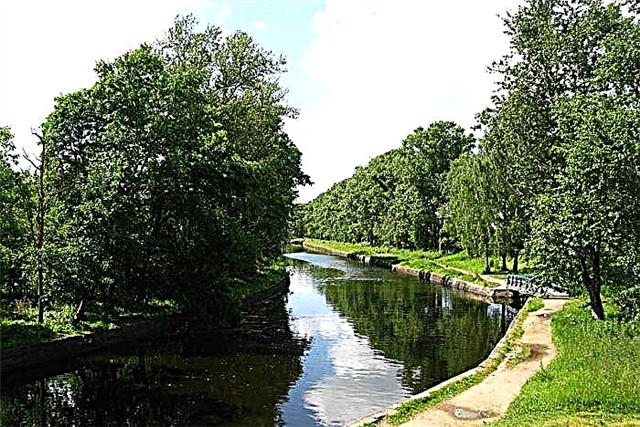
Kalyazin Radio Astronomy Observatory
Opened in 1992. Located next to the city of the same name. After a big fire in 2010, the equipment was restored for two years, and they also took advantage of the pause in the work of the station to replace outdated systems. The radio telescope is visible from afar due to its size. He searches for space debris, explores galactic objects and is used in all kinds of research that have a temporary nature.



